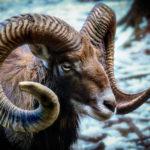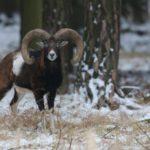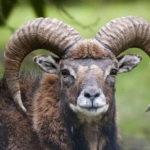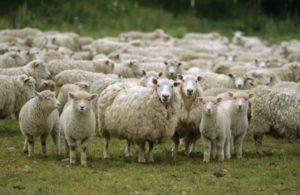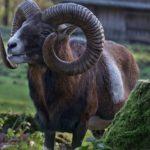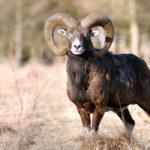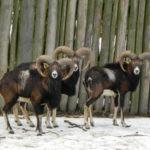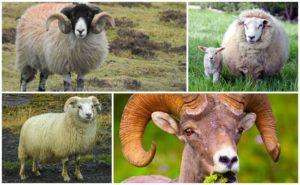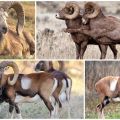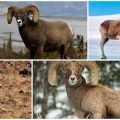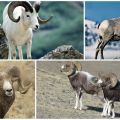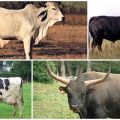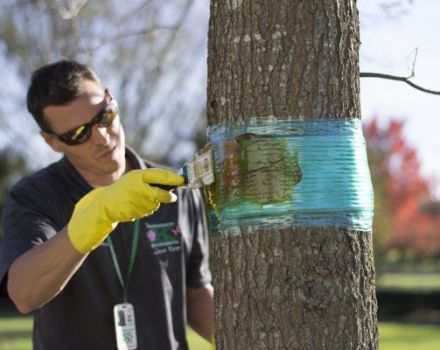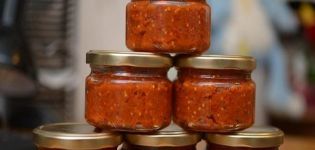Description and habitats of mouflon rams, whether they are kept at home
Mouflon rams are wild sheep that are found in various parts of the world. Their domestication began 7-11 thousand years ago. This happened in the southwest of Asia. Today the population of these animals is gradually decreasing. Mouflons have characteristic horns that attract hunters. However, some farmers raise these animals on their farms.
Description of the animal
These rams are of medium size. Their torso is 150 centimeters long, and their shoulder height can reach 92 centimeters. Large horns twisted in a spiral are considered a characteristic feature of these animals. They have 3 edges and form a maximum of 1 revolution.
In summer, mouflons are yellow-red or reddish-brown in color. In winter, the coat takes on a brownish tint. There is a dark stripe on the ridge. It is more pronounced in adult animals. There is a mane below the neck. She includes white and black-brown hair. Young lambs have brown-gray fur.
Varieties and habitats
The mouflon is one of the smallest mountain sheep. They are found in Armenia, the Balkans, Crimea, and northern Iraq. There are also a small number of animals in Cyprus, Corsica and Sardinia.
Scientists identify 3 of the most famous types of mouflons:
- Cypriot - lives only in forests and is smaller in comparison with individuals of other species. The color can be different - golden or brown. In this case, the belly, nose and bottom of the hooves are white.
- European - it is characterized by short hair. On the back, it has a reddish-brown color. On the belly, the coat is white. In the winter season, the top of the hull becomes brown-chestnut.
- The Transcaucasian is little more than a domesticated sheep. The animal has a sturdy body and reddish fur. The chest is dark brown in color.
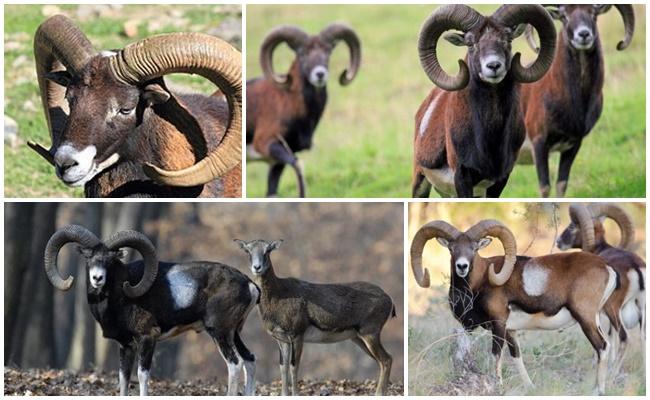
Mouflon behavior
Mouflons go out for food in the evening or early morning. They don't stay in one place for a long time. During the day, animals rest under bushes or hide under stones. This helps them protect themselves from predators. A well-developed herd instinct is characteristic of these rams. They gather in large groups of up to 1000 individuals. Animals are also able to establish close bonds. When separated, they experience great stress.
What does a wild animal eat?
Sheep live in mountainous areas where there is a minimum of grass.Therefore, animals have learned to dig up the roots of plants and find food on the rocks. Depending on the availability of water and food, sheep can move from place to place. Mouflons mainly feed on the following foods:
- cereals;
- branches and fruits of plants;
- roots;
- berries;
- green grass;
- foliage of fruit trees.
In the summertime, mouflons eat a lot. This is required for weight gain before winter. The stomach of animals can assimilate hard crops, which is very important in the cold season. In winter, the rams lose weight significantly, and some of them even die. Mouflons do not often face water shortages. They can even drink salty liquids. Therefore, animals often settle in places where there is a lack of water. This helps them avoid meeting a predator.
Reproduction and life expectancy
During the rutting period, males meet with females on the plains. At the same time, the rams hold tournaments for the opportunity to mate. Such fights represent a clash of two males with horns. Sometimes weak males are severely injured and even die.
The race can take place at different times. This can happen in March or December. Females form small herds of 10-15 individuals. 4-6 males come to them. At first, they diverge by 20 meters, and then collide at high speed.
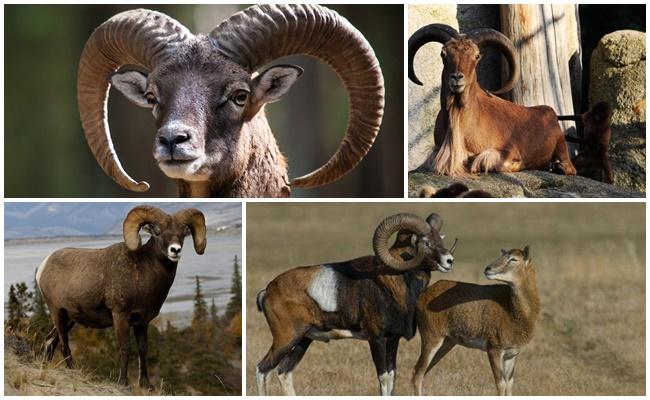
Sexual maturity of females occurs at 1.5 years, and males at 3-4. Pregnancy lasts 5 months. Then 1-2 lambs are born. Already in the first 2 hours they are on their feet. Cubs feed on milk for 4 weeks. They can then eat soft plants. At 3 years old, males leave the herd of females and look for their place in the hierarchy. Under natural conditions, the average lifespan of rams is 8 years, in captivity it increases to 10-15 years.
Natural enemies of mouflons
The enemies of animals are different. It all depends on the habitat. Asian animals often encounter panthers, lynxes, cheetahs. They can also suffer from attacks by brown bears, Transcaucasian tigers, foxes.
European mouflons run the risk of meeting foxes, Sardinian lynxes, martens. On rare occasions, rams encounter wolves.
In European regions, mouflons are more protected from predatory animals, since hunting is hampered by the mountainous landscape. At the same time, steppe eagles, golden eagles, black vultures are dangerous for newborn lambs. They can also be attacked by a buzzard or a kite. Mouflons cannot fight back predatory animals. They show aggression only during the rut. Females are unable to protect the young. When a threat appears, they run away.
Population and status of the species
In the last century, mouflons were actively hunted, as a result of which the European species was threatened with extinction. To restore the population, individual individuals were distributed in southern Europe. Due to the lack of natural enemies, the population was restored. Mouflons are considered to be a source of tasty meat and strong skin, which is why they are still hunted today. At the same time, Asian mouflons were not on the verge of extinction. This is due to the lack of commercial value. Such animals are used as an object of sport hunting. Their horns are sold as souvenirs.
Is it possible to keep at home
In captivity, animals are primarily raised to create hybrids with ordinary sheep. In doing so, you can improve their valuable characteristics. The fact is that the descendants of hybrids are highly viable and develop well. They are able to develop immunity to various diseases.
It is recommended to set up the mouflon enclosure on dry rocky soil. It is strictly forbidden to use barbed wire. At home, you can breed Corsican, Cypriot, Asian varieties.Moreover, animals are characterized by a fairly high accuracy of the population. This reduces the cost of breeding and reduces the rate of reproduction. Normally, 15 adult mouflons can be accommodated per hectare. At the same time, it is recommended to use modern methods of intensive grazing. Providing natural nutrition is also important.
To supply the mouflons with grass, it is recommended to level the soil, establish the nutrient content, prevent the spread of weeds, and disinfect the soil. In winter, mouflons should be given hay, cereal and vegetable mixtures, and sheep feed.
When introducing new individuals, quarantine should last at least 1 month. During this period, animals require careful monitoring. The aviary is recommended to be located on rugged terrain with steep slopes. It is advisable that they are covered with bushes. Mouflons are quite rare and unusual animals. Moreover, it is permissible to grow some varieties of these rams at home. However, for this they need to be carefully cared for.
